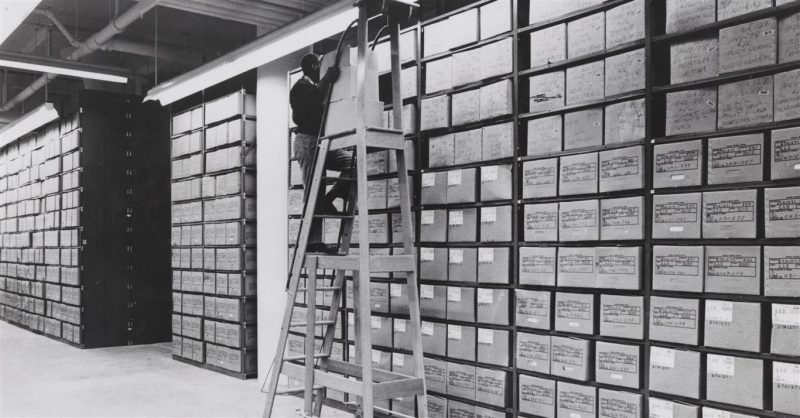An archivist employed at the National Personnel Records Centre must have a great deal of patience. Since a fire in 1973 destroyed the records of 18 million veterans who served in the Korean War, World War II, and World War I, and water and fire damage affected the rest, pulling a file isn’t as straightforward as in former times.
About 60 million individual military personnel records are in storage at the facility in north St. Louis Country not far from Interstate 270. It stores only B category files: those 6.5 million rescued from the fire at the center’s former location on Page Avenue.
The remaining documents are oftentimes moldy, brittle, damaged by both the water used to extinguish the blaze, and fire.
Archivist Marta O’Neill illustrates by opening a box of scorched service documents. As can be seen, some of their edges are scorched. Some appear warped or distorted due to water, some appear damaged by mold.
O’Neill leads 15 technicians in the records’ preservation lab. She said they work like a MASH unit, performing triage on the almost 300 daily requests for fire damaged records. Mostly, they originate with veterans who require documentation to qualify for VA benefits or from families who want a national cemetery as the final resting place for the relatives.
Some records are almost usable but require some work.
If a record is in a fairly good state, it just requires a light brushing to remove the mold, that’ll be done, and then it’s sent to a reference technician to answer the veteran, she explained. If it’s in a state of severe deterioration, substantial treatment may be needed. Using chemically treated sponges, technicians can pat away dirt and mold. Bits of ash are removed using a medical vacuum such as those used by surgeons. They fix tears and flatten pages so they can be placed in flexible Mylar screens that can be easily scanned or photocopied.
After the fire 43 three years ago, new technologies are continuously being discovered that can assist in recovering documents. For example, digital photography was used to improve damaged records belonging to a veteran of the Korean War.
The file has survived, but there are large areas of the paper that was blackened. The text can’t be seen. Since the ink heats at a different temperature than the paper, they’re able to capture that information using an infrared tool. By adjusting the contrast of the image, manipulating clarity, and exposure, ‘Kentucky’ appeared in the ash.
The life and income of veterans is dependent on their efforts, she said. She puts herself in the shoes of the veteran: they received the important information that they were promised, St. Louis Public Radio reported.
The National Personnel Records Center, part of the federal National Archives and Records Administration, serves as the main storehouse of military personnel records and federal civil service employees. Civilian records are housed at Valmeyer, Illinois in a limestone cave.
One of the two storage bays for B-files can hold 250,000 cubic feet of documents. On the first floor there are 15 levels of shelves and on each of the catwalks above, seven shelves of records. To forestall further decay the temperature is kept between 35 and 45 degrees.
